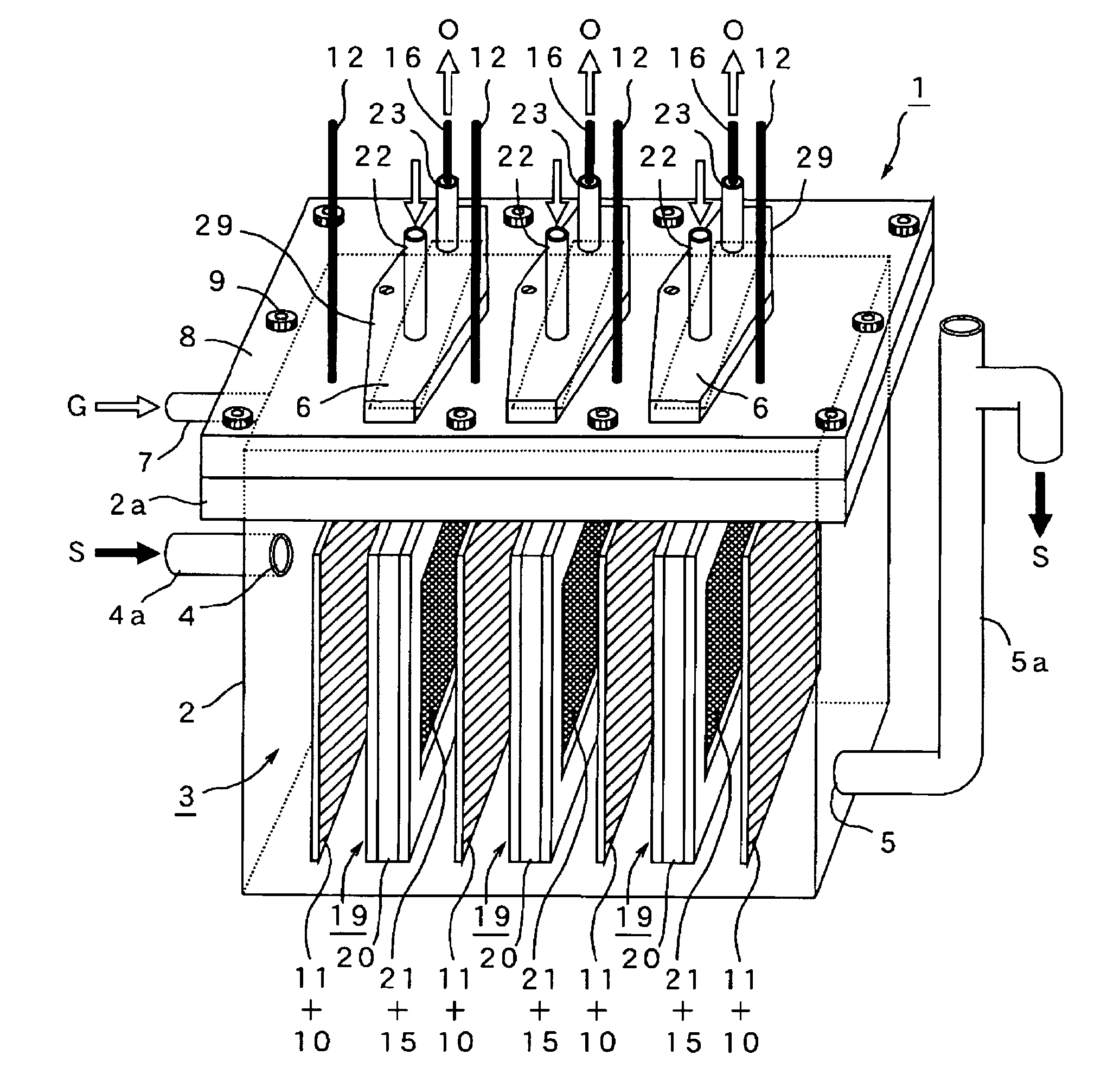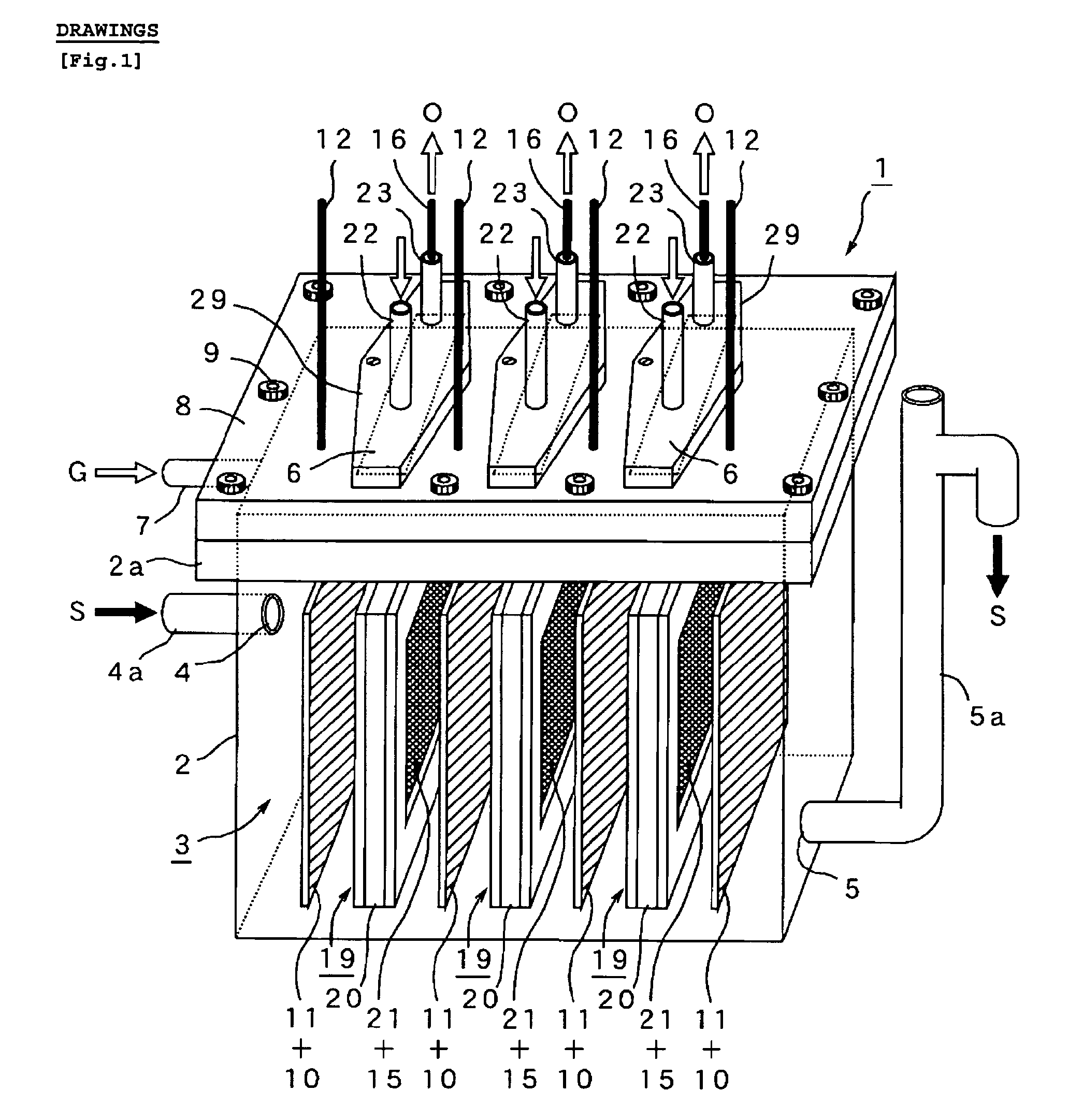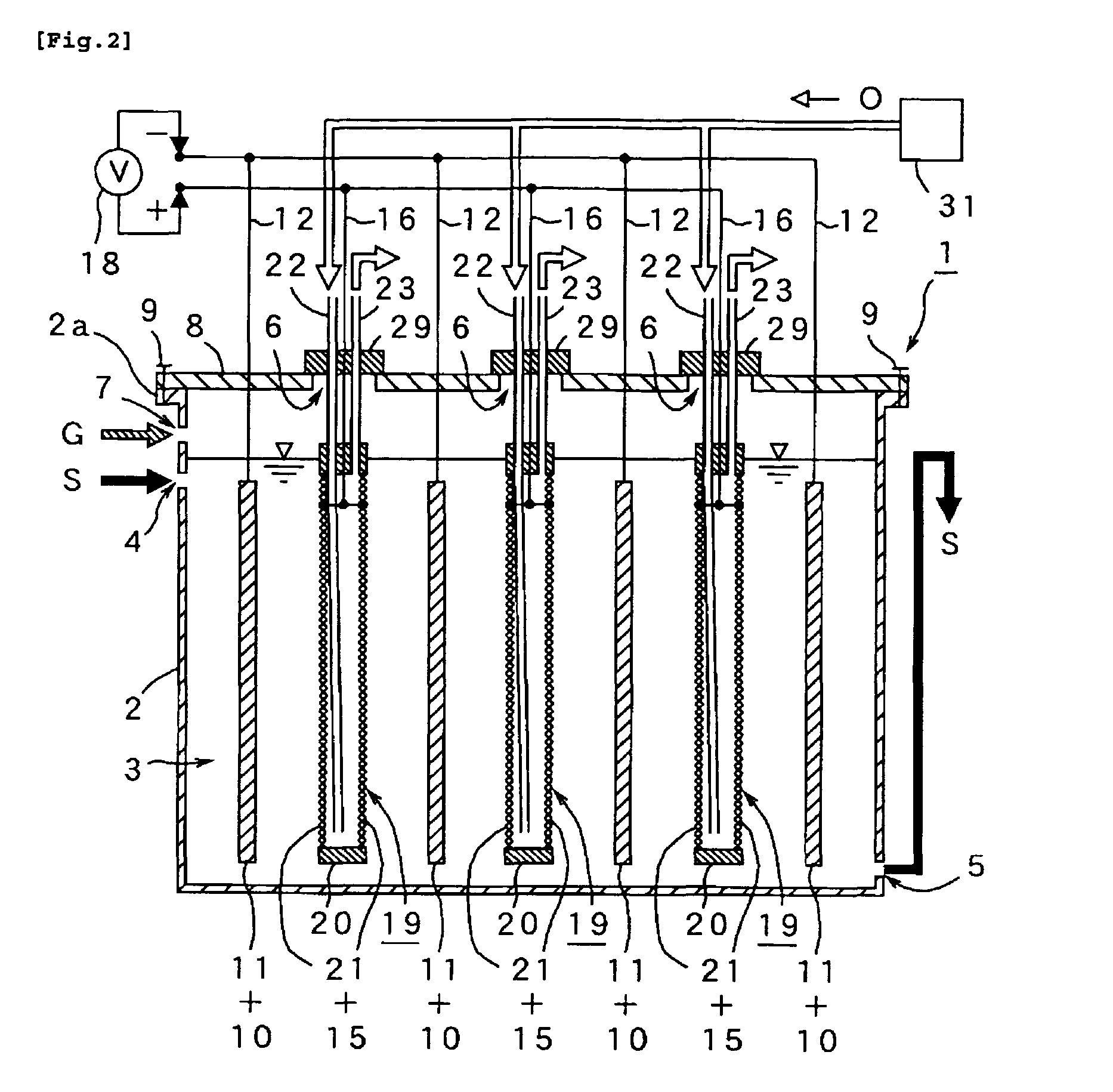Microbial fuel cell and membrane cassette for microbial fuel cells
a fuel cell and membrane technology, applied in the direction of fuel cells, solid electrolyte fuel cells, electrical equipment, etc., can solve the problem of low energy-recovery efficiency as a whol
- Summary
- Abstract
- Description
- Claims
- Application Information
AI Technical Summary
Benefits of technology
Problems solved by technology
Method used
Image
Examples
experimental example 1
[0041]For the purpose of confirming efficacy of the microbial fuel cell 1 and cassette type diaphragm 19 of the present invention, the microbial fuel cell 1 was test-manufactured by using an anaerobic electrolysis tank 2 (capacity of three liters) of circular section as shown in FIG. 8, an anode 10 made of carbon felt (approx 50 mm×200 mm) as shown in FIG. 3(C), and “air-cathode” as shown in FIG. 3(B), namely an airtight hollow cassette 20 comprising a shell frame 25 (approx 50 mm×200 mm) having a pair of windows 26, 26 (cross section approx 40 mm×180 mm) with stretching MEA (15+21) on both sides, in which five anodes 10 and five air-cathode 20 were arranged facing each other in a radial pattern around the center of them as shown FIG. 8. The tank 2 was continuously fed with artificial wastewater S containing organic polymers including starch (fluid containing organic substance S) at the predefined load of COD (1-3 kg / m3 / day) for 160 days continuously, and voltage was continuously re...
experimental example 2
[0043]After 100 days of continuous experiment using the same microbial fuel cell 1 and organic substance S as used in Experimental 1, the microbial fuel cell 1 was disassembled on the 101th day, and exchanged the airtight hollow cassette 20 in the condition that the anode 10 is exposed to air. In this experiment, the tank lid 8 was removed from the anaerobic electrolysis tank 2 by loosing bolts 9 on it (see FIGS. 1 and 2), the five degraded cassettes 20 were pulled out of the each slot 6 while remaining the inside space 3 in the electrolysis tank exposed to air, and then put in the five new cassettes 20 and covered the tank 2 and fastened the bolts 9. Result of this experiment is shown in FIG. 10 indicating that microorganism inhabiting on the anode 10 was damaged during change of the diaphragm 21 under a condition that the anode 10 is exposed to air and voltage recovered at the external electric circuit 18 decreased significantly. It also indicates that it takes another 25 days for...
experimental example 3
[0044]Using the same microbial fuel cell 1 and the fluid containing organic substance S as used in Experiment 1, another long-term continuous experimental operation was conducted. On the 101th day of the experiment, the airtight hollow cassettes 20 were exchanged by pulling out of the cassette slot 6 on the anaerobic electrolysis tank 2 without removal of the tank lid 8. Five slots 6 corresponding to each cassette 20 were built on the anaerobic electrolysis tank 2 which were released temporarily in rotation, and each cassette 20 were quickly replaced with new one. The anode 10 was kept in the liquid containing organic substance S for avoiding exposure to air as much as possible. FIG. 11 shows a result of this experiment, i.e. a chart of voltage variation with time in 180 days.
[0045]The chart of FIG. 11 shows that, when the cassette 20 is exchanged by using closable slot 6, voltage decreased a bit due probably to the effect of a small amount of air inflow and mixing within the anaero...
PUM
 Login to View More
Login to View More Abstract
Description
Claims
Application Information
 Login to View More
Login to View More - R&D
- Intellectual Property
- Life Sciences
- Materials
- Tech Scout
- Unparalleled Data Quality
- Higher Quality Content
- 60% Fewer Hallucinations
Browse by: Latest US Patents, China's latest patents, Technical Efficacy Thesaurus, Application Domain, Technology Topic, Popular Technical Reports.
© 2025 PatSnap. All rights reserved.Legal|Privacy policy|Modern Slavery Act Transparency Statement|Sitemap|About US| Contact US: help@patsnap.com



